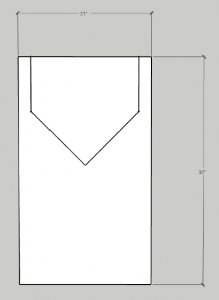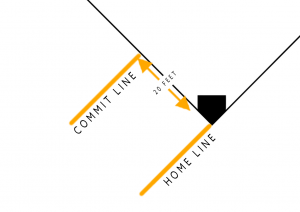Player Etiquette
- No alcoholic beverages or smoking.
- No profanity or foul language.
- Ejection from the game is a possibility with evaluation by coaches to determine.
- Metal spikes are not permitted.
- Throwing the bat will receive one team warning; second time the player will be called out.
- If the bat is thrown out of anger, the player may be subject to ejection.
Team Eligibility and Pre-Game
- Minimum 7 players permitted.
- If 7 players are present, the opposing team will provide a catcher (catcher makes no plays).
- If a team has 9 or more players, they will provide their own catcher.
- Minimum age of player is 15.
- Home team provides a new softball to begin the game.
- Home team has the field for warm ups prior to the game until 6:30 PM.
- Visitors have the field from 6:30 PM until 6:45 opening prayer.
- Game start will not be delayed for late arriving players who miss warm-up.
- Opening prayer will be made by the visiting team and the closing prayer will be the home team.
- Games start at 6:45 promptly following opening prayer.
- 15 minute period before forfeiture.
Game Format
- Games will be 7 innings long if conditions permit.
- 5 complete innings of play will be considered a complete game if conditions don’t allow for 7 innings.
- Darkness will be called at discretion of the coaches.
- Rain games will be determined by the consensus of the coaches.
- Make up games should be rescheduled at the earliest convenience of both coaches.
- All make ups must be played by the last scheduled game of the season.
- Disputes over rule interpretations on the field shall be settled by coaches, assistant coaches, and umpire only.
- All base paths shall be 60’ in length.
- This is a 3 strike 4 ball league with unlimited foul balls.
- Home runs – Each team will be allowed to hit 2 HRs over the fence during a game.
- For rules when the 2 HR limit is reached see: Fair, Foul, and Dead Balls
Umpires
- The batting team must provide the home plate umpire.
- The batting team must provide 1st and 3rd base coaches.
- 1st base coach will make calls for 1st base.
- 3rd base coach will make calls for 2nd and 3rd base.
- Home plate umpire has the final say in calls unless both base coaches disagree with the home plate umpire’s call, then a call can be overturned.
- No protests against umpire calls are allowed.
- If calls are in question, they will be addressed by the coach and the umpire.
- A neutral 3rd party umpire may be used in place of the home umpire if both teams agree.
- There will be no arguing with the umpire about calls.
Pitching
- Pitching distance will be a minimum of 45’.
- Foot must be in the vicinity of the rubber and cannot be less than 45’ from home plate.
- Any pitched ball, with the proper arc of 6’-12’, hitting any part of the carpet will be called a strike.
- Pitches not meeting the 6’-12’ requirement or hitting the mat will be called a ball.
- Catchers must let the ball hit the ground or mat before catching it.
- Strike carpet is rectangular in shape and measures 21 inches wide by 36 inches long.

